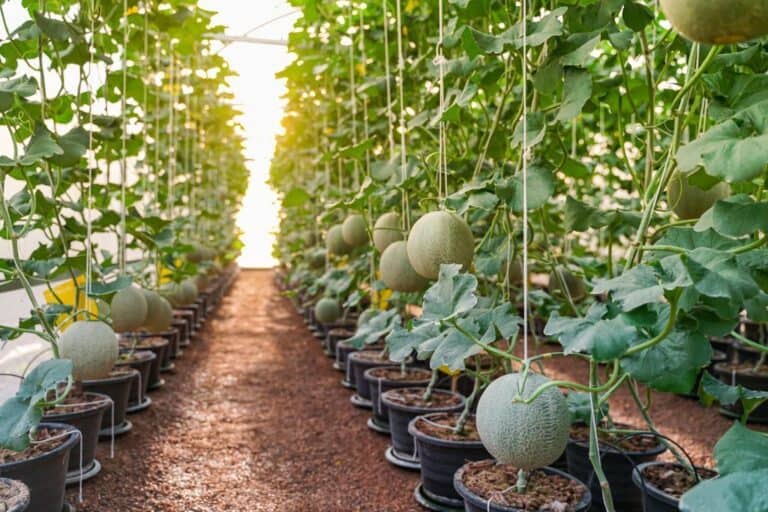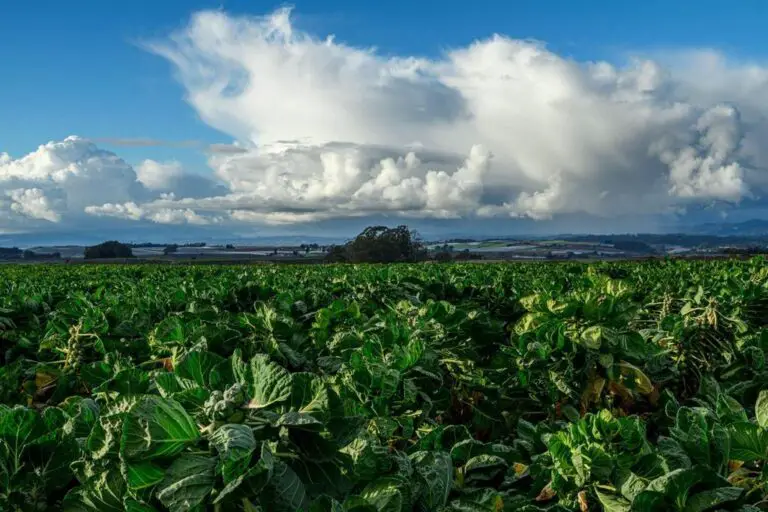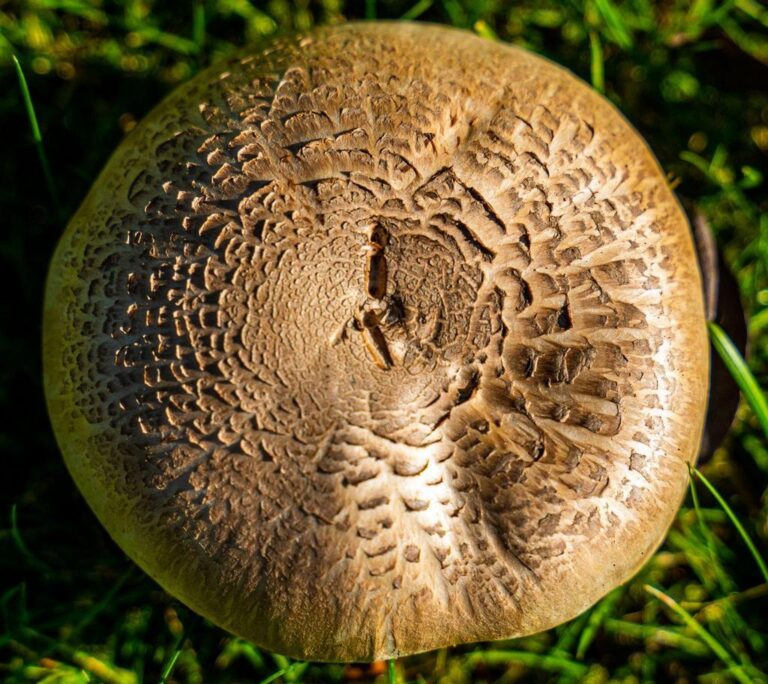Do Brussel Sprouts Have Seeds? How To Grow Without Seeds?
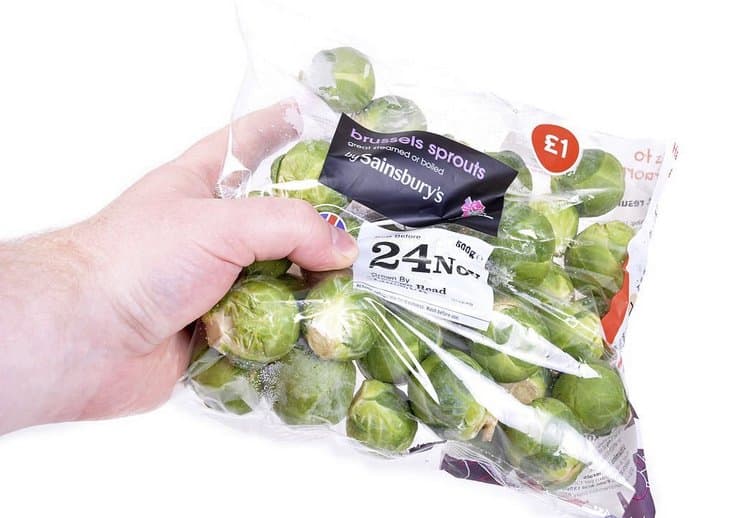
Are you a fan of those adorable mini cabbages known as Brussels sprouts? If so, you may have wondered about the mysterious world of Brussels sprout seeds. Do Brussels sprouts have seeds? And can you grow them without seeds?
Fear not, curious gardener, for we’re about to unravel the secrets of Brussels sprouts and their fascinating journey from seed to plate.
In this article, we’ll dive into the intriguing realm of Brussels sprouts and explore whether they possess their own seeds. We’ll also venture into the realm of seedless cultivation, uncovering alternative methods to grow these delectable vegetables without the need for traditional seeds.
So, if you’re eager to discover the ins and outs of Brussels sprouts and master the art of seedless growth, prepare to embark on a journey that will leave you with a newfound appreciation for these petite powerhouses of flavor and nutrition. Let’s dig in!
Overview of Brussel Sprouts and Their Reproductive System
Brussel sprouts, scientifically known as Brassica oleracea var. gemmifera, belong to the Brassicaceae family. These green gems are closely related to other cruciferous vegetables like broccoli, cauliflower, and kale. Brussel sprouts are named after the city of Brussels in Belgium, where they gained popularity in the 16th century.
The reproductive system of Brussel sprouts is a captivating aspect to explore. Like other flowering plants, Brussel sprouts go through a reproductive cycle involving the production of flowers, pollination, and seed development. Understanding this life cycle of Brussel Sprouts can provide insights into their seed production and cultivation methods.
A Brussel sprout plant consists of several parts, each playing a role in its reproductive process. These include the main stem, leaves, buds, flowers, and the sprouts themselves. The main stem gives rise to the leaves, which surround the buds that eventually develop into the sprouts we consume. Brussel sprouts’ flowers, although not commonly seen, play a vital role in seed production.
Brussel sprouts can be grown in many climates, but Brussel sprouts prefer to be grown in a cool climate that receives adequate rainfall throughout the growing season. The sprouts are produced on the leaf’s axils, beginning at the base of the stem and growing upward.
Do Brussel Sprouts Have Seeds?
Brussel sprouts are a biennial crop that begin to flower and seed during their second year of growth. Brussel sprouts develop seed pods that contain seeds that can be harvested and stored for later planting.
While the actual sprouts themselves do not contain seeds (they resemble a small cabbage), the plant does produce seeds. The seeds are derived from the seed pods that grow on the plant and can be harvested. The seeds of Brussel sprouts can be replanted in the following seasons.
What Do Brussel Sprout Seeds Look Like?
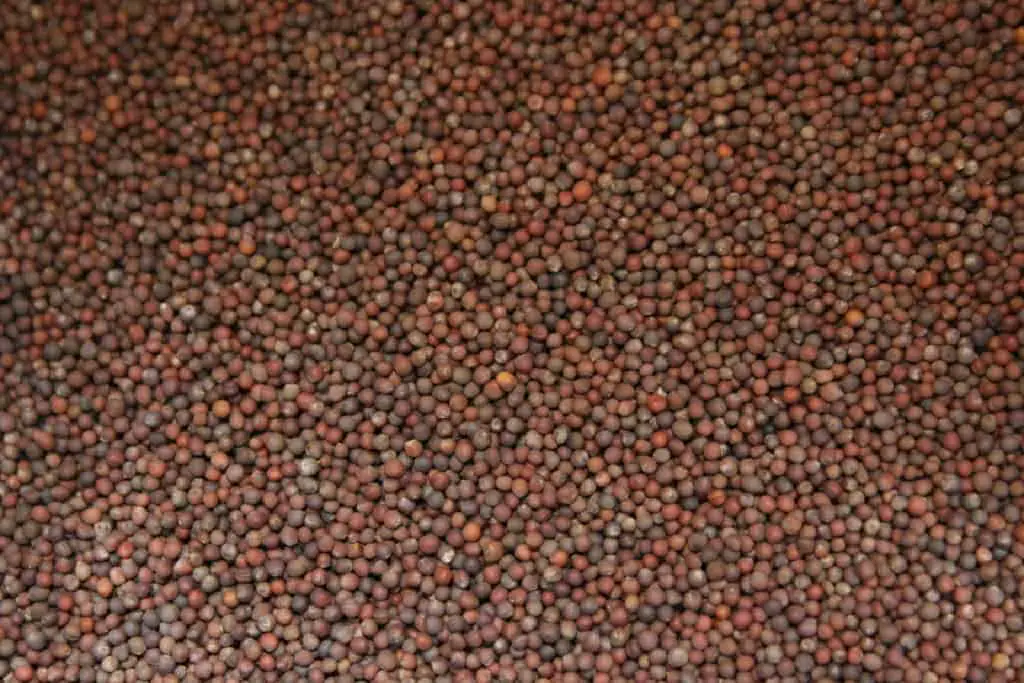
The seed pods of Brussel sprouts are long and thin, resembling elongated capsules. They can vary in color, ranging from green to brown, depending on the stage of maturity. As the pods mature and dry out, they begin to split open, exposing the seeds inside.
Brussel sprout seeds themselves are small, spherical, and typically have a blackish hue. They are usually about the size of a pinhead or slightly larger. The surface of the seeds may appear slightly textured or pitted.
When it comes time to harvest the seeds, it is important to wait until the seed pods have fully matured and dried on the plant. The dried pods can be carefully collected and opened to retrieve the seeds. The seeds can then be stored for future planting or used for culinary purposes, such as sprouting or cooking.
Understanding Seed Production in Brussel Sprouts
Seed production in Brussel sprouts follows a well-defined process. It begins with the growth of the plant and the development of flowers. When the plant reaches maturity, it produces clusters of yellow flowers that emerge from the leaf axils. These flowers consist of reproductive organs, including the pistil (female part) and stamens (male part).
Pollination, the transfer of pollen from the stamens to the pistil, is essential for seed formation. In the case of Brussel sprouts, pollination can occur through various means, including self-pollination or cross-pollination with the help of insects like bees. Once the pollen reaches the pistil, it fertilizes the ovules, leading to the development of seeds.
Several factors influence seed development in Brussel sprouts. These include environmental conditions such as temperature, light, and moisture. Adequate watering and nutrient availability are crucial during this stage. Additionally, proper spacing between Brussels sprouts promotes airflow and prevents overcrowding, which can impact seed formation.
Timing is also vital when it comes to seed production. Brussel sprouts require a longer growing season to reach the flowering stage and develop mature seeds. It’s important to allow the sprouts to fully mature and elongate, which often happens after the first frost, before harvesting them for seeds.
Seedless Varieties of Brussel Sprouts
While Brussel sprouts are typically associated with seeds, there are seedless varieties available. These seedless Brussel sprout varieties have been developed through selective breeding techniques, aiming to eliminate or minimize the presence of seeds in the sprouts.
Seedless Brussel sprouts offer certain advantages. For one, they save gardeners the hassle of removing seeds before cooking or consuming the sprouts. The absence of seeds also means a more tender and less bitter eating experience. Seedless varieties are often preferred for their convenience and improved taste.
In the market, you can find popular seedless Brussel sprout cultivars such as ‘Falstaff’ and ‘Nautic.‘ These varieties have been specifically bred to offer a seedless eating experience while retaining the distinctive flavor and texture of traditional Brussel sprouts. These seedless varieties are widely available and can be a great choice for home gardeners and culinary enthusiasts.
However, it’s important to note that even with seedless varieties, occasional tiny, underdeveloped seeds or seed remnants may still be present. This is because the complete elimination of seeds from Brussels sprouts can be a challenging task due to the complex nature of their reproductive system. Nonetheless, seedless varieties significantly reduce the presence of seeds and offer a more enjoyable eating experience.
Growing Brussel Sprouts from Seeds
If you’re interested in growing Brussels sprouts from seeds, you can follow these simple steps to cultivate your own delicious harvest:
- Choosing the right seeds: Select high-quality Brussel sprout seeds from a reputable supplier or consider saving seeds from a previous crop. Opt for seeds of the desired variety, taking into account factors like flavor, size, and maturity period.
- Preparing the soil: Brussel sprouts thrive in well-drained, fertile soil. Before sowing the seeds, prepare the soil by removing weeds and incorporating organic matter. A pH level between 6.0 and 7.5 is ideal for Brussels sprouts optimal growth.
- Sowing the seeds: Plant the seeds in a seed tray or directly into the ground, depending on your preference and local climate. Sow the seeds at a depth of approximately ½ to ¾ inch, spacing them about 2 inches apart. Water the soil gently after sowing.
- Care and maintenance: Keep the soil consistently moist, but avoid overwatering, as it can lead to root rot. As the seedlings emerge, thin them out, leaving the strongest ones with adequate spacing (about 18 to 24 inches apart) to allow for proper growth and air circulation.
- Providing necessary nutrients: Feed your Brussel sprout plants with a balanced fertilizer that is high in nitrogen. Apply the fertilizer according to the manufacturer’s instructions, typically starting a few weeks after planting and continuing throughout the growing season.
- Pest and disease management: Monitor your plants regularly for common pests such as aphids, cabbage worms, and slugs. Implement preventive measures like using insecticidal soaps, row covers, or organic pest control methods. Proper spacing, weed control, and good airflow can also help prevent diseases.
- Harvesting: Harvesting time varies depending on the variety and desired sprout size. Start harvesting when the sprouts are firm, about 1 to 2 inches in diameter. Begin picking from the bottom of the stalk, working your way up, and remove the sprouts by twisting them gently.
By following these steps, you can enjoy a bountiful harvest of homegrown Brussel sprouts packed with freshness and flavor.
Growing Brussel Sprouts Without Seeds
In addition to growing Brussel sprouts from seeds, there are alternative methods available for propagating these delectable vegetables without relying on seeds. These methods include vegetative propagation techniques such as cloning and transplanting Brussel sprout plants. Let’s explore these methods:
- Cloning: Cloning involves taking cuttings from an existing Brussel sprout plant and encouraging them to root and grow into new plants. To clone Brussel sprouts, select healthy and disease-free plants. Take cuttings from the lower portion of the main stem, ensuring they have several nodes. Place the cuttings in a rooting hormone, then plant them in a well-draining medium. Provide proper moisture and light conditions, and within a few weeks, the cuttings should root and start growing.
- Transplanting: Transplanting is another viable method for propagating Brussel sprouts without seeds. This method involves taking advantage of the lateral shoots, also known as suckers or side shoots, that develop from the base of the main stem. Here’s how you can propagate Brussel sprouts through transplanting:
- Identify lateral shoots: As the main Brussel sprout plant grows, it produces side shoots or suckers around the base of the stem. These shoots can be easily distinguished by their smaller size and tight leaf arrangement.
- Prepare the new planting location: Choose a well-prepared garden bed or container with fertile soil. Ensure that the soil is loose, well-drained, and enriched with organic matter.
- Separate lateral shoots: Gently separate the lateral shoots from the main plant by carefully cutting or snapping them off close to the base. Be cautious not to damage the main plant or the developing sprouts.
- Planting the lateral shoots: Dig small holes in the new planting location, spacing them about 18 to 24 inches apart to allow sufficient room for growth. Place each lateral shoot in a hole and cover the roots with soil, pressing it gently to secure the plant in place.
- Watering and care: Water the transplanted shoots thoroughly immediately after planting. Maintain consistent moisture levels in the soil, but avoid overwatering. Provide the transplants with adequate sunlight, typically 6 to 8 hours per day.
- Support and maintenance: As the transplants grow, provide support by using stakes or cages to prevent the plants from bending or falling over due to their weight. Remove any competing weeds to reduce competition for nutrients and space. Regularly monitor for pests or diseases and take necessary measures to protect the plants.
By employing these propagation methods, you can expand your Brussel sprout garden without relying solely on seeds. Experiment with both cloning and transplanting to find the method that works best for you.
With a thorough understanding of Brussel sprout reproduction, seed production, and propagation techniques, you can embark on a rewarding journey of cultivating these delightful vegetables.
Remember, regardless of the method you choose, providing optimal growing conditions, proper care, and regular attention to pest and disease management will contribute to the successful cultivation of Brussel sprouts.
So roll up your sleeves, put on your gardening hat, and enjoy the journey of growing Brussel sprouts to savor their delightful flavors and reap the rewards of your efforts.
Conclusion
Brussels sprouts may not have seeds within the sprouts themselves, but they can be grown from seeds or transplants. By following the proper techniques and providing the necessary care, you can cultivate these delicious and nutritious vegetables in your own garden.
Whether you choose to start from seeds or opt for transplants, the satisfaction of watching your Brussels sprouts plants thrive and harvesting your homegrown sprouts is truly rewarding. So, roll up your sleeves, prepare your garden beds, and embark on the journey of growing Brussels sprouts to enjoy their bountiful benefits.
Remember, growing Brussel sprouts can be a rewarding endeavor, whether you choose to grow them from seeds or explore seedless varieties. With a little patience, care, and knowledge, you can enjoy the satisfaction of nurturing these flavorful and nutritious vegetables right in your own backyard. Happy gardening!
FAQs
Can you eat Brussel sprouts if they have seeds?
Yes, you can still eat Brussel sprouts even if they have seeds. However, some people prefer to remove the seeds before cooking or consuming them to ensure a smoother texture.
How long does it take for Brussel sprouts to reach the flowering stage?
Brussel sprouts typically take around 90 to 110 days to reach the flowering stage, depending on the variety and growing conditions.
Are seedless Brussel sprouts genetically modified (GM)?
No, seedless Brussel sprouts are not genetically modified. They are developed through traditional breeding methods, selecting and crossbreeding plants with reduced seed production.
What are the advantages of growing seedless Brussel sprouts?
Seedless Brussel sprouts offer convenience, as there is no need to remove seeds before consumption. They also tend to have a milder and less bitter flavor compared to sprouts with seeds.
Can I save seeds from my Brussel sprout plants for future planting?
Yes, you can save seeds from your Brussel sprout plants. Allow the flowers to mature and form seed pods. Once the pods turn brown and dry, harvest them, remove the seeds, and store them in a cool, dry place for future planting.
Do Brussel sprouts require cross-pollination for seed production?
No, Brussel sprouts can self-pollinate, meaning they can produce seeds without cross-pollination. However, cross-pollination by insects like bees can enhance genetic diversity and result in more robust plants.
Can I propagate Brussel sprouts through cuttings other than lateral shoots?
While lateral shoots are the most common method for propagating Brussel sprouts, it is also possible to propagate them through stem cuttings. Take cuttings from the main stem, treat them with rooting hormone, and follow the same steps as cloning to encourage root development.
What are the common pests and diseases that affect Brussel sprouts?
Common pests include aphids, cabbage worms, and slugs. Diseases such as clubroot, powdery mildew, and black rot can also affect Brussel sprouts. Regular monitoring, proper hygiene, and implementing preventive measures can help manage these issues.
Can I grow Brussel sprouts in containers?
Yes, Brussel sprouts can be successfully grown in containers as long as the containers are large enough to accommodate their root system. Choose a deep container with good drainage and provide adequate support for the plants as they grow taller.
When is the best time to harvest Brussel sprouts?
Brussel sprouts are typically harvested when the sprouts are firm and about 1 to 2 inches in diameter. Start harvesting from the bottom of the stalk and work your way up, picking the mature sprouts as needed.
Are Brussel sprouts a winter vegetable?
Yes, Brussel sprouts are considered a winter vegetable as they thrive in cooler temperatures. They can withstand frost and often taste sweeter after exposure to colder weather.
Can I grow Brussel sprouts in a warm climate?
While Brussel sprouts prefer cooler climates, they can still be grown in warm regions with some modifications. Choose heat-tolerant varieties and provide shade, mulch, and consistent moisture to help mitigate the heat stress.
Are Brussel sprouts a nutritious vegetable?
Yes, Brussel sprouts are highly nutritious. They are rich in vitamins C and K, fiber, and antioxidants. They also provide minerals like folate and manganese, making them a valuable addition to a healthy diet.

